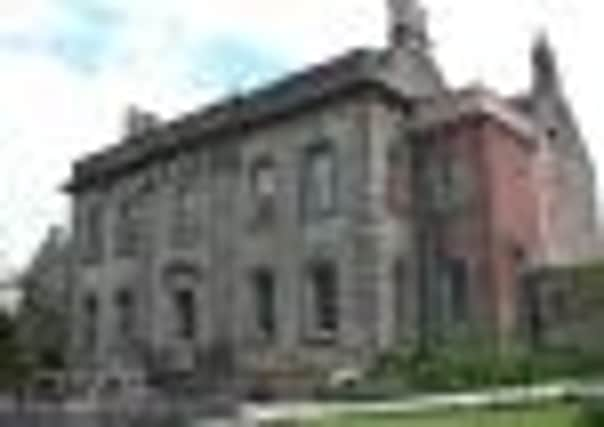A voice from the past


Fingers flashing over the keyboard, the lady with the laptop conjures up the voice of the Lady with the Lamp. In a few seconds, here, in this sitting room in Derbyshire, we’re listening to Florence Nightingale, born almost two centuries ago. It’s like hearing a ghost.
“When I am no longer even a memory, just a name,” she says, speaking slo...ow...ly and dist...inct...ly, and just a touch hootily, “I hope my voice may perpetuate the great work of my life. God bless my dear old comrades of Balaclava and bring them safe to shore.”
Advertisement
Hide AdAdvertisement
Hide AdThe recording, half-a-minute of history originally etched on a wax cylinder, was made in 1890, when Florence was 70, to raise funds for survivors of the Charge of the Light Brigade. At the same time, engineers recorded the bugler who sounded the Charge, and Tennyson reading his famous poem about it with background noise thundering like horses’ hooves.
The room where the lady with the laptop, Pam Rivers, and I are sitting would have been very familiar to Florence, whose little-known Derbyshire connection is celebrated in three new heritage trails. They take walkers and drivers around an area where she spent some of her childhood and to which she later returned (with her pet owl) to nurse her great aunt. In this very house, now home of Pam and her husband John, secretary and chairman of the Florence Nightingale Derbyshire Association, which has devised the trails.
“Florence’s whole family was completely opposed to her becoming a nurse,” says John. “It wasn’t regarded as a job for a lady to do.” She had other ideas. “I hated the idea of being tied for ever to a life in society,” she said. She lived into a doughty, bonnetted, bedridden old age, never leaving her bedroom in London during the 14 years before her death in 1910.
The trails explore an almost secret part of Derbyshire, across one small parish just a few miles square that feels utterly remote from the busy tourist areas of the nearby Peak District.
Advertisement
Hide AdAdvertisement
Hide AdMy wife and I have driven here along back roads from South Yorkshire, skirting the Chatsworth estate and planning a detour through a hamlet called Unthank (but the road is closed, unthank you very much). It’s a high, broad landscape, dotted with the remains of stone circles, criss-crossed by dry stone walls and keening with curlews.
Past Matlock, where Riber Castle’s battlements glower from a hilltop like a Transylvanian ruin, the A6 hurtles past Cromford, the solid stone village where Arkwright set up the world’s first water-powered cotton mill and children as young as seven worked 13-hour days.
We take the road past the village’s Swiss-chalet-like station, just outside a tunnel. “Sometimes in winter there’s a kind of misty glow in the tunnel,” says a waiting passenger. “It can be very weird.” From here, we follow the signs to the village of Holloway and, up a helter-skelter of lanes, discover what’s being marketed as Florence Nightingale’s Derbyshire. Here in Holloway is Lea Hurst, the sturdy, many-gabled house which became the wealthy Nightingale family’s summer home. Fanny, Florence’s mother, was never keen on it – too cold in winter, she said, and too small. She preferred Hampshire. Florence loved Lea Hurst, but had to admit: “It has only 15 bedrooms.” After coming back from the Crimea, she took the train to Whatstandwell (the old station platform is on the heritage car trail) and walked over the fields to the house.
Lea Hurst later became a retirement home for nurses. “You’d see the old ladies walking across the meadow to go to church,” says John Gregory, secretary of the nearby Florence Nightingale Memorial Hall. The hall’s name attracts Nightingale groupies, but there’s not much to see apart from a framed print of “The Illustrious Crimean Heroine” nursing in a hospital.
Advertisement
Hide AdAdvertisement
Hide Ad“A party of Japanese tourists once came bounding through the door,” says treasurer Dave Carless. “I was painting the pantomime scenery and they looked round, saw that picture and were snapping away.”
We follow one of the new trails – both about three miles – along footpaths and bridleways, through tunnels of horse chestnut and honeysuckle, past market gardens and allotments, with vast views over wooded hills and almost Himalayan banks of rhododendrons and azaleas. It’s so quiet you could hear a real nightingale sing five miles away.
In the village of Lea, we take in the Unitarian chapel where generations of Florence’s family worshipped. “Watch and pray that ye enter not into temptation,” advises an improving text on the wall, and there’s a clock “in memory of Tom Stoppard, 1901–94”. That’s the other Tom Stoppard. Along the road is the stern-looking 17th century Lea Hall, long in the Nightingale family and another of Florence’s childhood homes.
We’re staying at Manor Farm, a B&B – smart, partly medieval, full of character and comfort – in the almost hidden hamlet of Dethick (three farms and a church). An amazing panorama opens out from the churchyard – hills, meadows, grazing sheep, swooping swallows, a vision of pastoral serenity.
Advertisement
Hide AdAdvertisement
Hide AdAs the sun sets, we walk down the long meadow behind the church for dinner at the Jug and Glass, a welcoming traditional real-ale pub (and B&B) in former weavers’ cottages in Lea. When licensees Jez and Sharon Hytch left teaching jobs in Matlock three years ago to run it, long-term colleagues confessed they’d never been to Lea.
And it’s just a couple of miles from Matlock. It’s that secluded.
Getting there
Manor Farm, Dethick (01629 534302; www.manorfarmdethick.co.uk ) has double rooms from £75 including breakfast.
Tourist information 01629 583388 (www.discovereastmidlands.com ).